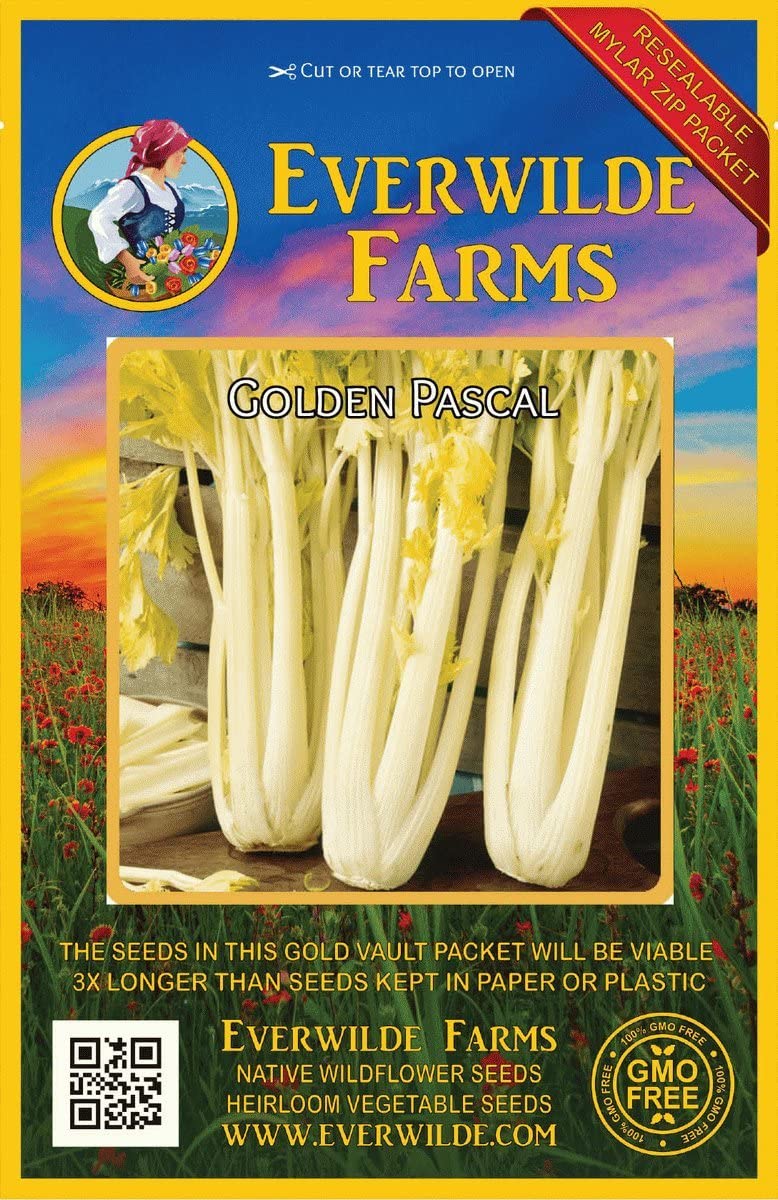كرفس باسكال ذهبي
2,000 د.ك
No one really knows where celery originated, though claims come from such diverse locations as Sweden, New Zealand, and Algeria. Experts believe it probably was first cultivated in the Mediterranean basin. In ancient times, celery was valued primarily for its medicinal benefits; French and Italian cooks first started making use of it for an herb or flavoring in the seventeenth century. A Scotsman named George Taylor is credited with bringing celery to United States, when he grew it in his garden and offered it to the guests at a local ball.
Sowing: Celery grows best as a fall crop in most climates, so start your seeds about 10 weeks before the last spring frost. Soak them overnight to speed germination, then sow them in a flat in rows 1″ apart; keep the soil moist and keep the flat out of direct sun. Germination often takes two or three weeks. When the plants reach about 2″ tall, transplant them into pots; set them out in the garden when they reach 6″ tall or after the last frost date. Space them 6-8″ apart in rows 2-3′ apart, putting them at the same soil level as in the pots. Make sure the soil is enriched with compost or other organic matter. For companion planting benefits, plant celery with tomatoes, cauliflower, or cabbage.
Growing: Provide water each week; feed them with compost or fertilizer every two weeks. Carefully remove weeds. If the temperature falls below 55 degrees F consistently, cover the plants. Growing success for celery depends on plentiful moisture, enriched soil, and protection from high temperatures and sun. Golden Pascal is a self-blanching variety, so no further measures are needed for blanching the stalks.
Harvesting: Cut off the entire plant at soil level as soon as it reaches a diameter of 3″, or remove individual outer stalks when they reach 12″ tall. Celery leaves can also be used, such as for flavoring like an herb or in salads.
Seed Saving: To save seed in areas where the ground freezes over winter, it will be necessary to dig up the celery before the first heavy frost; cover the roots with dirt and the stalks with straw, and keep them in a humid location with near freezing temperatures. In the spring, remove rotted or damaged stalks and set out the plants after the last frost. In warmer climates, leave the celery in the ground and cover them thickly with mulch over winter. In the spring, allow the plant to flower; when the seed heads on the flower grow brown and dry, cut them off and allow them to fully dry indoors. Remove as much chaff as possible, then store in a cool, dry place.
Latin Name: Apium graveolens
Type: Open Pollinated, Warm Season
USDA Zones: 3, 4, 5, 6, 7, 8, 9, 10, 11, 12
Seeds per Ounce: 71,000
Planting Method: From Transplant
Sunlight: Full Sun
Height: 20 Inches
Color: Yellow, Green
غير متوفر في المخزون




